After decades as a technological laggard, the healthcare industry has entered the digital age. The acceptance and use of technology in practice will not only continue to be adopted in 2017, but will be accelerated at a pace we have not yet experienced. Advances in technology will create enormous possibilities and opportunities – the wise will recognize and ride this trend.
Here are the 5 predictions for the direction of technology in 2017.
1. Mobile
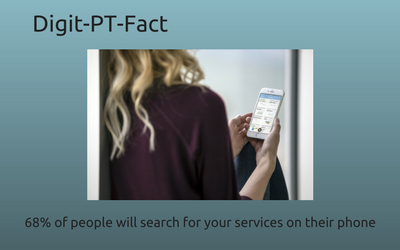
Your next patient will most likely find your practice using a smartphone, not a computer.
New data from comScore shows that 68% of the total time spent online is via a mobile device. Computers account for only one third of digital time.
Ask yourself: What does your clinic’s website look like on a cell phone?
Keep your eye on improving the patient experience and increasing patient engagement with mobile friendly websites, apps and digital marketing. Mobile technology and new apps will change the way we interact with our patients from billing, scheduling, reminders, marketing, patient engagement and re-engagement.
2. Social media
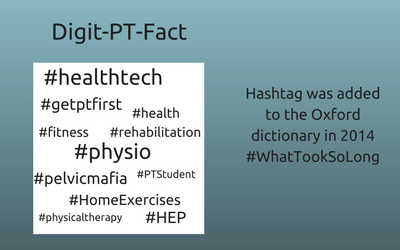
Social media is changing how people find information and connect with others. Here are the current stats on number of users on the most popular social media sites.
- Facebook: 1.59 billion (by far the largest, fastest growing medium)
- Instagram: 400 million (purchased by Facebook)
- Twitter: 320 million (total number of users is stagnant)
- Snapchat: 200 million (growing rapidly)
- LinkedIn: 100 million users (a resume site with little engagement)
Like it or not, social media is not going away – it will continue to evolve and change but once you get the hang of the basics for your clinic you can share, like, snap, forward and comment to build your clinic’s reputation.
Top social tip: share your story with an image rather than words, even better still – a video. Video was shown to have the highest ROI (return on investment) in 2016 and this trend will continue in 2017.
Beyond traditional channels, like Facebook and Instagram, new health specific social platforms are emerging and gaining significant traction. Figure1, a Toronto based company, is like Instagram for healthcare practitioners. They doubled their growth in 2016 and are now being used by more than one million practitioners world-wide.
Consumer facing social platforms will also become mainstream in 2017, meaning your patients will be connecting with other patients through wellness apps (like Whistle) and engagement tools (like Fitbit). Consumer to consumer (or patient to patient) apps are growing exponentially – using an app that connects you with your patients is going to become the norm, not the exception. healthSwapp is a physiotherapy home exercise app that allows you to connect with your patients when they leave the clinic.
3. Digital Marketing
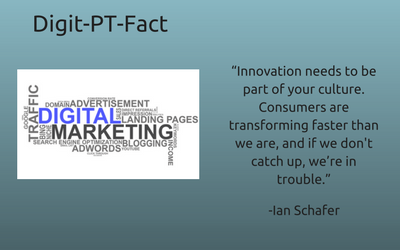
The channels that make up digital marketing include: web sites, social media, email marketing, Search Engine Optimization (SEO) and blogging.
Word of mouth and referrals from previous or current patients are still going to be the best source of marketing, but patients and potential patients expect more. The majority of potential new patients will search online for the service they are looking for. Ensuring your website is mobile optimized and shows up when people in your area search for services similar to yours is going to be critical to acquiring new patients. Having social media accounts that are active as well as other content, like a blog, helps improve your rating on Google.
Google is getting smarter – Googlebots crawl and index trillions of pages on the web and make the most relevant ones instantly accessible to the person searching. That means you/your brand can reach anyone, anywhere, at any time, and that’s powerful.
There’s no need to choose every digital channel, just the right ones for your practice or clinic. Make sure you can be found online by those in your target audience. Some options for your 2017 digital marketing strategy include:
- Add a blog to make your website more dynamic (Google will like you more) while providing quality information to potential new patients to immediately increase trust
- Find out where your target audience live on social media and learn how to use that channel
- Give your website a face lift by updating the design or hiring a developer to make it mobile friendly
- Hire an SEO expert to help your clinic become top of the list
- Start sending out regular emails to your client list using a free service like MailChimp.
4. Data-Driven Decisions
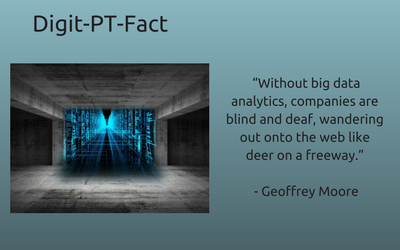
Data-driven healthcare: the effective use of large amounts of data collected in the process of managing the health and well-being of millions of patients in a continuous effort to improve the quality, efficacy, and cost of care.
Data-driven healthcare also creates the possibility of delivering care that is highly personalized to each individual patient, while shifting more control and responsibility from practitioners to the largest untapped healthcare workforce – patients and their families. Instead of a “one-size-fits-all” approach, data captured by patients, caretakers and practitioners, will allow us to provide customized, precise treatments (called Precision Medicine).
5. Wearables and Sensor Technology
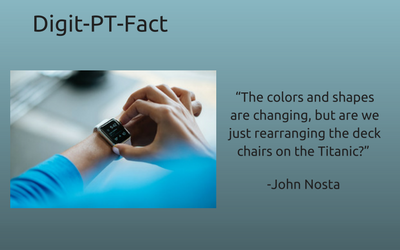
Wearables have great potential, but they need to be helpful to the user’s health and directly affect behavioral change, in order to stay appealing to buyers. While more than 50% of millennials are predicted to purchase a wearable in 2017, there is a lot of skepticism around their use as a slightly better version of yesterday’s pedometer: “the colors and shapes are changing, but are we just rearranging the deck chairs on the Titanic?” (John Nosta)
Wearables and sensors have much more potential in the world of disease detection and nanotechnology, including detecting a heart attack days prior to the attack and early detection of cancer cells before they’ve formed a tumor. This data and technology is seriously disruptive and game changing in medicine. So while speaking with our patients about their overall activity levels and recording information from their fitness tracker will be important in 2017, the truly disruptive wearables and sensors are not set to take off until 2020.
Over the past two decades, innovation has become critical to economic growth and progress in all industries except healthcare. The pace of innovation is accelerating exponentially and will become a fundamental component in healthcare in 2017. The aggressive rate of change facing healthcare calls for leaders who understand and possess an innovative mindset. This shift in our industry creates opportunities for those who are willing to adopt and grow with the market. Using technology in practice will enable better patient engagement and outcomes, as well as provide practitioners with new channels to reach and help more people.
 ‘Tech Roundup’ is a bi-monthly post by Maggie Bergeron, RPT and co-founder of healthSwapp, that looks at the latest health technology trends and the impact on your practice.
‘Tech Roundup’ is a bi-monthly post by Maggie Bergeron, RPT and co-founder of healthSwapp, that looks at the latest health technology trends and the impact on your practice.
Save
Save
Save
Save



